25. Oct 2015 - DOI 10.25626/0044
Jakub Zarzycki is a PhD Candidate at the Faculty of Historical and Pedagogical Sciences, University of Wrocław, Poland and the Faculty of Letters and Philosophy of the University of Rome "La Sapienza" (co-tutele program). From September 2015 until August 2016, he is a Polish Doctoral Research Fellow at Wirth Institute for Austrian and Central European Studies (University of Alberta, Canada). His scholarly interests include Polish visual culture from 1861-1918, Post-colonialism and methodology of art history. His research has been published in "Dzieła i Interpretacje", "Opposite", and other journals. October 2014 - March 2015, he received the Bronisław-Geremek-Scholarship for his individual research project at the Imre Kertész Kolleg, Jena.
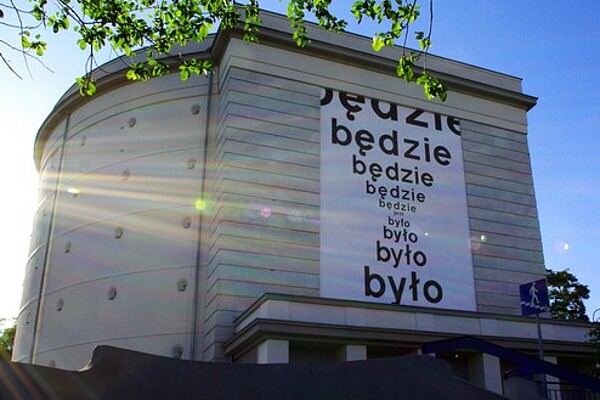
The Germans Did Not Come exhibition, held at Wrocław Contemporary Museum from 19 December 2014 to 23 February 2015, was a collection of around thirty works centred on the formation of a Vratislavian identity following World War II. As the organisers stated in press releases, the exhibition’s title – The Germans Did Not Come – was an oblique reference to the widespread fear among the Wrocław population (which persisted until well after the war) that the city might fall back into German hands, with the attendant consequences: the loss of one’s property and living environment leading to yet another displacement.
Although that scenario never actually happened, it provided the basis for an exhibition that has raised a whole host of crucial questions about research into remembrance, e.g. the universalisation of individual experience, historical narrative, and related criteria for truth. The Germans Did Not Come was also a fine example of current museum practices involving contemporary art; and it may thus be regarded as symptomatic for how contemporary art can visualise negotiations between history and identity, be it individual or collective. By discussing several of the works on display at the exhibition I would like to demonstrate how, today, contemporary art and history (both as an academic discipline and a course of events) intermingle and inspire each other yet also arouse mutual controversy; and how they are able to remain autonomous yet still instrumentalise one another. As a starting point, I will endeavour to discover the origins of this relationship, touching on issues such as myths, symbolic space, the role of institutions, and historical policy, all of which are equally involved in issues of truth. But that is not all. The exhibition – with its numerous contexts that were often not immediately discernible – served as an allegory for the fate of Central and Eastern Europe during World War II, the “Iron Curtain” years, and the post-1989 period. Therefore it is insufficient merely to regard it as symptomatic of a phenomenon encapsulated in the concept of ‘contemporary art depictions of history’. The Germans Did Not Come was an intellectual offering which required profound thought.
To begin with, we should outline a few of the exhibition's underlying contexts. It was held at Wrocław Contemporary Museum[1], located two kilometres away from the city centre. The museum is currently housed in a former air-raid shelter built during World War II after a design by Richard Konwiarz. The building is quite challenging as it is windowless and has curving walls, which make the interior rather claustrophobia-inducing. However, it would be a shame to demolish it, owing to its architectural value.[2]
Additionally, there is the historical context of Wrocław. Its nearly thousand-year history has been dominated by successive nations: Poles, Czechs, Austrians and Germans, and its sizeable Jewish minority should also not be forgotten. Each of these groups, which often coexisted side by side, have left their imprint on the city.
During the war, Wrocław was declared a fortress ('Festung'), which fated it to become one of Europe’s most devastated cities.[3] Its residents were partially evacuated in January 1945, although a large portion of them perished when forced to leave on foot in freezing temperatures.[4] Festung Breslau finally capitulated two days after Berlin.
Following the Yalta Conference in August 1945, the city became part of Poland. Once the Germans had moved out, Poles migrated there, some arriving from the Eastern borderlands, which had been annexed by the Soviet Union, and the process of reconstruction and repopulation was obviously a protracted one. The city was reconstructed after 1945, which took a very long time; certain signs of destruction are still visible today, particularly in terms of the urban layout. This whole situation – or rather the memory of it – served as the main inspiration for the exhibition.
Tomasz Opania's work Tanz mit mir is an installation comprising a concealed gramophone playing a record of music by Wagner.[5] Attached to it is a white flag on a pole, which rotates in time to the music from the record. Tanz mit mir is an example of a visual representation of what I would describe as aestheticising politics. Its most important feature is to generate a reaction among viewers and forge a relationship with them, hence I prefer to dwell on the process of perceiving the work, not its creation. Politics has a tendency to present itself for appraisal not only according to criteria of legitimacy and effectiveness, but also in 'crowd-pleasing' ways. This occurs on various levels, from the rhetoric and style of speeches, to the staging of political events that resemble performances or political marketing.
At this point, I would like to discuss the way politicians apply cultural codes, and Adolf Hitler’s connection with Wagner in particular.[6] The artwork Tanz mit mir as a case of appropriation, whereby political actions subject to intellectual 'rational/objective' appraisal were shifted into the realm of the 'emotional/subjective' by means of almost artistic tricks. Here, the very title – 'dance with me' – underlines a desire to interact with the audience. This is not an appeal for reasoned thinking, but an encouragement that pushes us into a choice that is more emotional than rational: should we join in this game or not? It also emphasises that the music playing continuously is not switched on by spectators, i.e. they have no influence over it. Secondly, the use of a white flag in this case suggests vulnerability, capitulation and no bad intentions, which is also encouraging to spectators. We notice, however, that it is simply a pretence, for the flag rotates only while the music plays. Thus, although it may appear vulnerable, it is in fact controlled and used merely as an instrument. Thirdly, its regular motion may even seem choreographed – an aspect of artistic creativity.
What the spectators observe is firmly anchored in the aesthetic tidiness of appraisal, and thus appeals to their emotions. It is designed to incite them to some specific action with an unknown outcome. The gramophone itself is hidden and we only see the flag, implying that the mechanisms behind the action are covert, which further highlights the possibility of manipulation.
Although the work makes reference to precise historical facts – in this case, the cultural roots of Nazism – its message is more universal in nature.[7] Aestheticising politics relies on leaders employing commonly used cultural codes. As a result, their aims can become camouflaged and later divorced from rational appraisals or attempts to compare them with the truth.
Jerzy Kosałka's work Disassembly, from The Germans Have Come series, deals with the postwar problem of proving that Wrocław actually belonged to Poland. The work itself is an installation comprising a model of the city’s Spire [Iglica] monument that features toy German soldiers, some of which are being photographed with it, while others begin work to dismantle it.
Kosałka’s installation refers back to Polish propaganda surrounding the Regained Territories Exhibition of 1948. The Spire was intended to visually overshadow the nearby Centennial Hall, which was seen as a thoroughly German monument.[8] The artist uses the same elements as the propagandists he references: a building as a symbol of visual domination and a successful civilisation; the gravity and significance of the historical moment; and fear of the 'evil Germans'. Since the Germans would be coming – obviously dressed in Wehrmacht or SS uniforms – they would surely destroy what the Poles had built or rebuilt (as symbolised by the Spire), so being afraid of them was justified. Kosałka is not a propagandist himself, but he mocks propaganda by applying its own methods, as one can see from the form of his work.
By representing this situation through a model and figurines, Kosałka miniaturises it, accentuating its comic elements (Germans posing for photos), and thus restores their true dimension. This procedure has the completely opposite effect from that of propaganda based on monumentalisation, solemnity, atmosphere, and the rhetoric of fear. The artist demonstrates how propaganda was also rather petty, laughable or childishly toy-like.
He opens the field for his audience to seek new interpretations. He achieves this by multiplying the visual associations in his work, each of which can draw the viewer’s attention to an entirely different aspect. Evidence of this is that he uses miniatures exclusively, which may be a reference to the models once used to plan military manoeuvres, or an allusion to the increasing popularity of re-enactment groups. The figurines’ behaviour also resembles that of German soldiers having their photographs taken with Hitler beneath the Eiffel Tower after the occupation of Paris.
Kosałka's work is an example of how, as a rule, art today shifts the burden of interpretation onto the viewer, who is even made to play games with the work. On the other hand, the piece shows that eliminating the influence of propaganda or other mechanisms for instrumentalising history is merely the first stage in forming a community. The next is to understand and interpret history personally, in an attempt to comprehend its meaning – an individual task for each of us. Needless to say, identical or similar cultural or emotional codes can apply to particular groups, allowing such practices to become part of a shared set of values; but the final judgement on what occurred belongs to the individual.
Ludomir Franczak's work Loot Square is an installation made up of a mechanism scattering feathers to a musical accompaniment. The following quotation briefly describes the piece: "In Ludomir Franczak's installation, strewn feathers bring to mind tales of the 'loot square' [Szaberplac] situated on today's Plac Grunwaldzki, where people traded German possessions found in the ruins and in empty houses or bought from the owners. Fabrics and bed sheets were supposedly in high demand as they could function as ‘swag bags'. Eiderdown duvets were simply emptied of their contents, and the swirling feathers turned the middle of the summer into a snowy winter […] Franczak creates a vision of the postwar Wrocław as the Wild West, a place where Home Army soldiers escaping from the Red Army sought refuge, alongside destitute settlers and plunderers looking for easy pickings in the ruins."[9] Franczak's work is one possible narrative of the fate of Poles in Wrocław after 1945. While contemplating it, one might ask which things became etched in that community's common memory, and how?
Franczak shows the daily life of ordinary people caught up in major historical events that obliged them to make difficult decisions. The artist achieves this by reconstructing the atmosphere of the period, concentrating on elements that history typically omits for being too subjective: totally unimportant details, such as reminiscences about ubiquitous flying feathers, or a tune one might have heard playing on the szaberplac. Although this may seem irrelevant when depicting the history of the times, Franczak evocatively crafts a pertinent story that refers to such impressions. It allows us to feel that air of uncertainty in Wrocław’s unstable situation after 1945, as well as people's need to organise a life for themselves.
Franczak reveals a concrete experience shared by that special community and tries to render it more accessible by concentrating on emotions. The artist shifts the story's emphasis, passing over the worst times Vratislavians had to face, and avoids dwelling on the tragedy to focus on what one might call the 'Far West atmosphere'. He does not gloss over all the hardship, of course, but suggests that adaptability was an essential trait for living in Wrocław in the late spring of 1945, which sometimes called for actions that would later be deemed 'adventurous' I must stress that, owing to its lack of a protagonist and its references to the ambience and mood of the time, the work mostly concerns a community, rather than an individual experience.
Piotr Blajerski's work Fantasising History is a video consisting of archive footage, video materials documenting war and terrorist actions, photographs and recorded interviews gathered by Małgorzata Dzieduszycka during her meetings with Wrocław residents who had settled in the city right after the war.[10] It weaves together issues of artistic form, including shock aesthetics and the creation of artworks out of fragments, with the theme of historical narrative.
Blajerski's video touches on the lives of Poles in Wrocław after 1945. Each story we hear is linked to an image and sometimes a sound. A view of a forest or clouds, for example. Spliced between the individual segments are short YouTube videos of military actions somewhere in the Middle East. The entire work may therefore be interpreted as a collection of personal experiences. Blajerski concentrates on what is popularly held to be history's most important, genuine and vital element in chronicling events: eyewitness reports.
That is not all, however, for the most striking component of Blajerski's work is contrast, which dominates its composition and delivers its chief message. The contrast between stories told in calm voices and violent military action sequences. The contrast between certain dramatic narratives (e.g. of life in Siberia or of fugitives being shot) accompanied by images of tranquil clouds or woods. It transforms Blajerski’s work into more than just a collage of stories, as one is required to reflect on the way they came into being. One might say this contrast invites us to question the veracity of the scenes we are watching. After all, the message is clear from the work's title – what the viewer sees is fictitious. The question is: to what extent?
The key to interpreting Blajerski's work is to grasp the tricks he deploys, such as aestheticisation and uglification. The artist deliberately stretches these to the limit – the former verging on kitsch, the latter shocking to audiences. Thanks to his skillful inclusion of music and images – purely artistic methods – one might begin to doubt what was meant to be a truthful account of events. This is not some banal statement on how history is manipulable in certain contexts; it focuses on how it came to be. To some extent, it is rooted in common cultural codes that allow us – consciously or unwittingly – to create our own narrative, which may even run counter to what really occurred. There is also a connection with how history itself is perceived. Even though it is a miscellany of often chaotic events of varying magnitude, it only makes sense in the hands of those who recount it. Blajerski’s work highlights a certain inherent flaw in the logic of describing history according to a desire for a structured, orderly progression of events. The artist also indicates how, in these constructs, eyewitness testimonies may easily be used to serve our own ends. In other words, since it aspires to be put into order, history begins to fantasise about itself.
Anna Kołodziejczyk and Michał Sikorski’s work Wrocław: Year Zero is an installation made up of two objects – a mock-historical piece of furniture and a painting of the interior of a villa. These act as a kind of backdrop for fragments of real objects from prewar Wrocław. One should note that the material the work is made of determines its overall meaning. That material is history, both literally and symbolically.
Wrocław: Year Zero explores the theme of war as a historical event; a theme that covers two dimensions and horizons. One is general, even topical in nature, and concerns issues of war per se. The other has a highly specific characteristic of its own: the context of Wrocław and what the war was like in that precise place and time, during and after the siege. Both dimensions of this theme are reflected in the work.
How has the aforementioned existence of history (as a theme, so far) been presented? One such representation of history – or visualisation of how artists perceive it – is Kołodziejczyk's painting of a villa's interior, which is accompanied by a stylised bedside cabinet. The picture suggests that the artist has attempted by means of painting techniques to portray how something may once have looked. The effect is clearly not documentary, as can be seen from the way it is painted. It aims to convey the artist’s vision of something that is no more. The cabinet – like any object made to look as if it dates from the past – complements the painting, and is intended to evoke 'olden times' and related aesthetic associations. That is one of the main objectives of any historical stylisation, after all.
Another way to transmit history is to manifest it physically. By using authentic, corroded objects that had been destroyed in Wrocław, the artists seemingly wish to show in an almost tangible way how the city looked and what its former residents left behind. Without this context, the objects would just seem like worthless junk, despite their serving as physical evidence of historical narratives. Only the non-historical objects created with historical intent (a vision of the past and a stylised antique) allow the actual artefacts from the time to pass on the stories they hold (metaphorically, of course). Moreover, the division between the work's two elements (the painting and cabinet, plus the mutilated objects) corresponds to the work’s dual horizons – one general and one specific.
The artists' inventiveness determines the way the story is told, and largely involves artistic techniques: painting the picture and exhibiting the stylised cabinet. However, since those elements are not strictly historical, they permit the ‘genuine’ fragments to provide vital information about Wrocław in 1945 and after. This is crucial because it underlines the interpretative nature of the artists' work vis-à-vis the past. While not adhering to historical fact, they do offer a vision that instead helps bring that past to life. Even though the context is artificial, the tangible historical remains may only be interpreted correctly from within it. In other words, in this case the artists opted for an act that was more interpretative than archival. First they interpreted one particular facet of history, then strove to reconstruct its intrinsic meanings, which was obviously not purely objective.
Kołodziejczyk and Sikorski's work is a pars pro toto which touches on the historical issues explored in the contemporary art of The Germans Did Not Come exhibition. I would like to propose the following possible model for conceptualising ways to portray history in contemporary art:
1) History as a theme composed of two horizons:
a) one general – a universally understood, topical theme.
b) one specific – a theme understood in the context of a given event.
2) History and its representations which deploy the following tricks (which can be applied simultaneously or interchangeably):
a) visualising history (conveying an artist’s own vision of history) or historical stylisation (with reference to bygone values).
b) displaying objects from a specific historical period as parts of an artwork.
3) History and its interpretation, i.e. fleshing out a theme (recalling its two horizons) by using the aforementioned tricks to allow an artist’s principal idea to become part of the work.
In my introduction, I described The Germans Did Not Come exhibition as an intellectual offering, a laboratory in which one could observe certain processes. Clearly, admiring works of contemporary art which may seem hermetic or meaningless can serve as a great inspiration to us in our perception and interpretation of history.
Translated by Mark Bence
Jakub Zarzycki: The Germans Did Not Come, or History as Material for Contemporary Art. In: Cultures of History Forum (26.10.2015), DOI: 10.25626/0044.
Copyright (c) 2015 by Imre Kertész Kolleg, all rights reserved. This work may be copied and redistributed for non-commercial, educational purposes, if permission is granted by the copyright holders. For permission please contact the editors.
The exhibition was accompanied by Jednodniówka MWW, containing descriptions of the works plus texts on Vratislavian identity issues by Anna Stec, Michał Bieniek and Izolda Topp
The exhibition was also discussed elsewhere:
Piotr Sarzyński, Wejdą – nie wejdą, Polityka Cyfrowa
Krzysztof Ruchniewicz, Niemcy nie przyszli?
Małgorzata Miśniakiewicz, Konflikt pamięci
Jakub Zarzycki, Miasto ’45 (i później), czyli wrocławski palimpsest
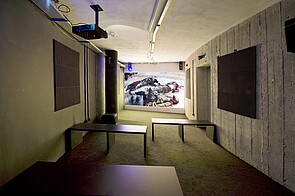
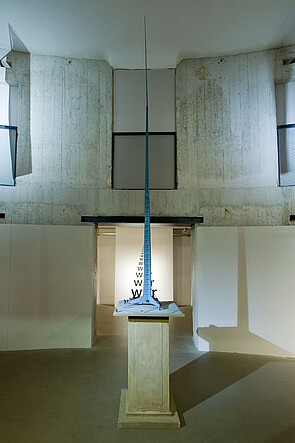


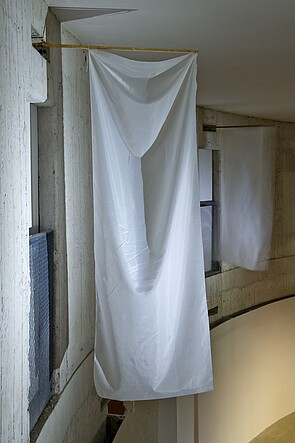
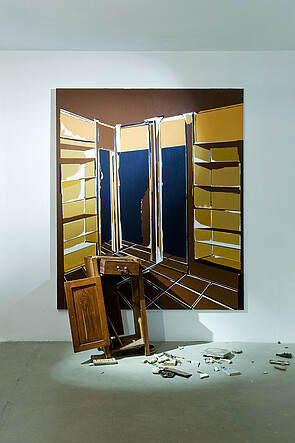
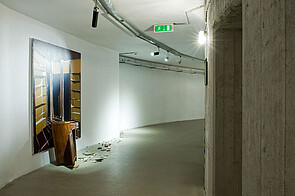
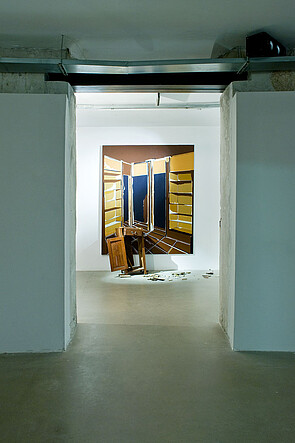
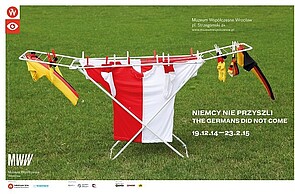
Lidia Zessin-Jurek · 20.04.2023
A History that Connects and Divides: Ukrainian Refugees and Poland in the Face of Russia’s War
Read more
Lidia Zessin-Jurek · 20.12.2021
Trapped in No Man’s Land: Comparing Refugee Crises in the Past and Present
Read more
Interview · 08.03.2021
A Ruling Against Survivors – Aleksandra Gliszczyńska-Grabias about the Trial of Two Polish Holocaust...
Read more
Lidia Zessin-Jurek · 03.09.2019
Hide and Seek with History – Holocaust Teaching at Polish Schools
Read more
Maciej Czerwiński · 11.04.2019
Architecture in the Service of the Nation: The Exhibition ‘Architecture of Independence in Central E...
Read more
Get this article as PDF download (including pictures).